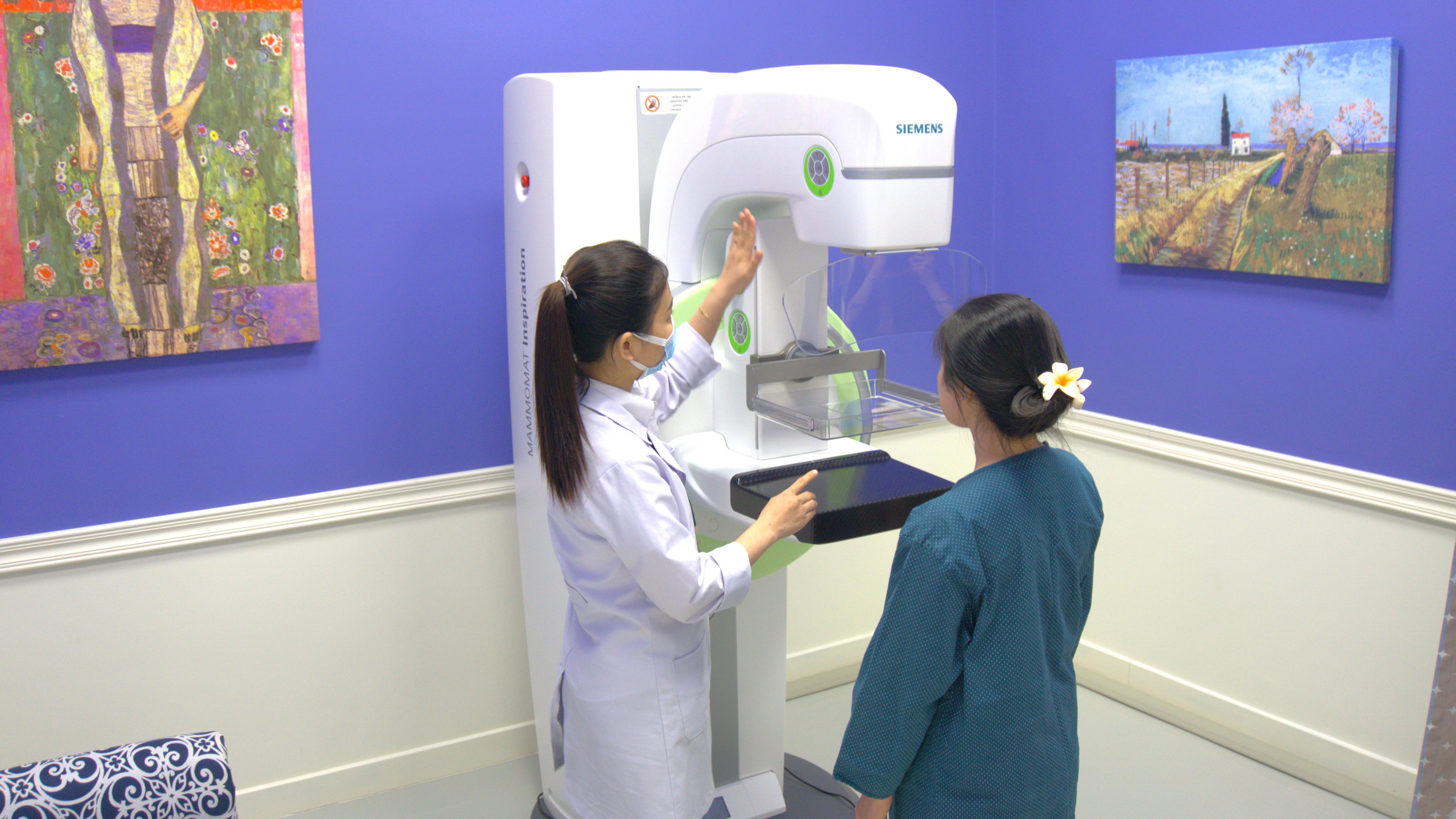Women should screen for breast cancer starting at age 25

Breast Cancer Screening Patients Using 3D Mammography and Transpara AI Technology at Care1.
October 17, 2024 – Experts increasingly recommend breast cancer screening starting at age 25, especially for those at high risk, as more young individuals are being diagnosed with the disease, rather than waiting until age 40.
"The number of breast cancer patients from the age of 25 is rapidly increasing; therefore, screening should begin at this age," said Dr. Saiko Sugiyama, a Japanese Obstetrician and Gynecologist, during the launch of Family Medical Practice's 3D Mammography technology with Artificial Intelligence (AI) on October 11.
According to Dr. Saiko, Japan provides free breast cancer screening for women starting at age 40, every two years. For younger women, however, doctors recommend paying for screening beginning at age 25. Specifically, women under 40 who have risk factors—such as a family history of breast cancer, smoking, or using hormone-affecting medications like birth control—should undergo annual mammograms. Japan also advises younger women to have mammograms before pregnancy.
The American Society of Breast Surgeons (ASBrS) also recommends that all women undergo breast cancer risk assessments at age 25. Women in the average-risk group should begin annual mammograms at age 40, while those at high risk, particularly with a family history of breast cancer, should start screening earlier, with yearly mammograms from ages 25 to 30, as advised by their doctor.
"Time is precious when it comes to breast cancer. The earlier it's detected, the better the chances of a cure, helping women preserve the beauty of their breasts," said Dr. Rafi Kot, General Director of Family Medical Practice. With increasingly advanced screening techniques and AI assistance, doctors can detect breast abnormalities very early, even in patients with dense breast tissue, which was previously challenging to diagnose.
Breast cancer has now surpassed liver cancer as the leading cause of new cancer cases in Vietnam, with nearly 25,000 new cases annually, according to the Global Cancer Observatory. Previously, breast cancer ranked first in new cases among women but generally followed liver or lung cancer in both men and women.
In Vietnam, breast cancer accounts for nearly 29% of total female cancer cases, meaning one in three women diagnosed with cancer has breast cancer. The disease originates from abnormal growth in breast cells, forming tumors that can invade nearby tissues and metastasize to other organs. Risk factors include age, genetics, medical history, and lifestyle.
Breast cancer has a high survival rate of over 90% if detected early. However, early-stage symptoms are often subtle and are primarily discovered through screening. In slightly later stages, the disease may manifest as a painless, immobile lump in the breast or abnormal nipple discharge.
Currently, screening methods include clinical breast exams, breast ultrasound, mammography (breast X-rays), and MRI with new-generation contrast agents, which help accurately assess breast tissue damage. Doctors also use tumor biopsy techniques for histopathological diagnosis, including vacuum-assisted breast biopsies.
Women are encouraged to perform regular monthly self-exams, ideally right after their menstrual cycle when the breasts are softest. They should seek medical assistance immediately if they detect any lumps or unusual changes.
Source: VnExpress
 본 웹사이트는 사용자 경험을 향상을 위해 쿠키를 사용하고 있습니다.
본 웹사이트는 사용자 경험을 향상을 위해 쿠키를 사용하고 있습니다.